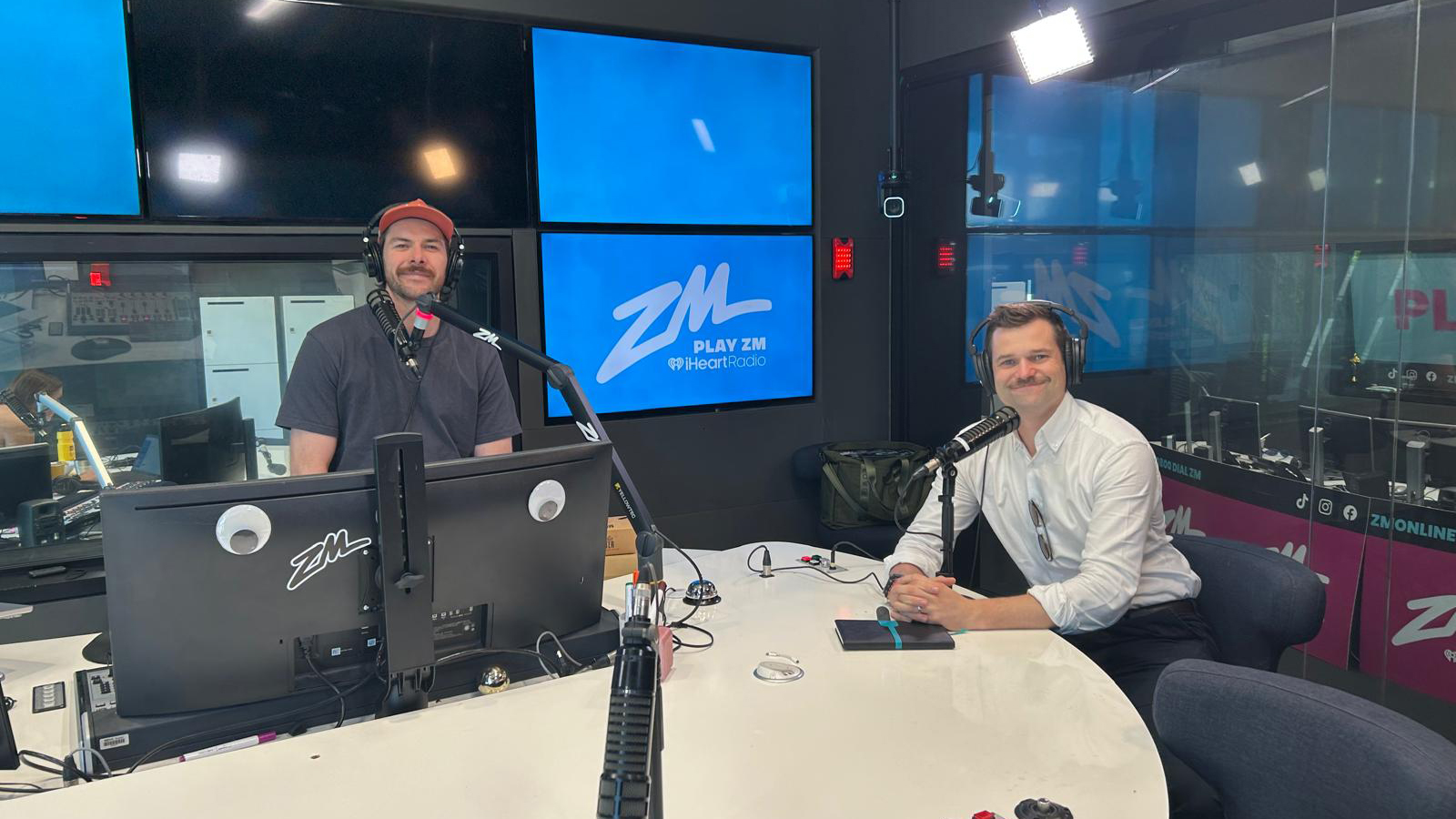As of 1 August, the world economy is firmly in the new Trump tariff regime. So, what exactly are the impacts, and is there really a direct link between tariffs and higher consumer prices? Milford’s Frances Sweetman talks to Ryan Bridge about the complexities behind the additional cost, and how suppliers and retailers are managing the tariff burden.
Listen.
Click here to download the MP3 file or listen to the podcast on your favourite platform:
Read.
Bridge talks Business: 26 August 2025
Episode Transcript
Ryan Bridge
Kia ora and welcome to Episode 46 of Bridge talks Business with Milford. You’ll hear economists talking about Trump’s tariffs a lot – mainly because of the fears that they’ll stoke inflation. And one thing you’ll notice they mention is the pass through. When will we see prices that people pay for imported products in the US go up? Why the time lag?
We’ve talked about this before on the podcast, but we haven’t really drilled into the reasons why only a third of those tariffs have so far shown up in higher prices. Today Frances Sweetman is drilling down on this for us. First, here’s your top five business bits.
1. The US Federal Reserve promising to react more quickly to rising inflation in the future, under a new framework announced at the central bankers Super Bowl at Jackson Hole last week. That doesn’t apply right now, though. The chair Jerome Powell signalling they’ll likely cut rates in September. This is amid concerns over the labour market weakness, which trumps Trump’s inflationary tariff pressures, for now.
2. The global PMI business survey showed improving business confidence in developed markets. Businesses reported increasing price pressures in the US, while non-US price pressures remained pretty modest. Hiring plans also improved in the US. This is allaying some of those concerns over a slide in employment.
3. Back home, the Reserve Bank delivered a quarter point rate cut as expected, but the tone was dovish. They signalled a lower path forward which should be the kick up the jacksy the economy needs, once those mortgage holders roll over onto lower rates.
4. Nvidia results this week a big focus for investors. The world’s biggest stock and poster child for the AI boom continues to perform well. That said, recent tech results had a flavour of the ‘buy the rumour, sell the news’ about them. Solid results are still expected there.
5. And finally, beyond Nvidia, investors will be searching for clarity on the state of US employment, which will determine the path of US interest rates. Next week, we get monthly employment reports, which should provide some detail on that.
So, you heard a lot in the top five business bits about tariffs. And we’re now going to talk about the time lag between when the tariffs are set, Trump comes out with the announcement, and they take effect. What happens to prices and what’s with the time lag between those three stages. Joining us is Frances Sweetman from Milford. And just a reminder this segment is informational only and should not be considered financial advice.
Frances, welcome back to the podcast. Can I just say how great it is to see you again?
Frances Sweetman
Likewise, Ryan.
Ryan Bridge
I tell everyone that comes on that they’re my favourite guests. But you’re the only one that I really mean it about. It’s so good to see you. Now we’re talking prices. And I’ve wondered this in my head, but never really voiced it to anybody, so I’m glad we’re talking about this today. We talk about tariffs. Trump’s putting the tariffs up. But we’re not seeing the prices increase at the same rate, right?
Frances Sweetman
That’s right. In fact economists are estimating that we’ve only seen about a third of the impact of tariffs passed into prices so far.
Ryan Bridge
How can that be. What’s with the time lag?
Frances Sweetman
It’s a great question. And there’s two things that are happening. The first one is that we’re only seeing about half the expected burden of tariffs, actually implemented and collected in customs. So we’re only seeing about half the impact come there. And then the rest of it is that we’re seeing retailers and suppliers actually absorbing some of the tariff costs themselves instead of passing it through.
Ryan Bridge
Okay. So with the importers, how do you get around putting up the tariff rate? What are some of the mechanisms that they use?
Frances Sweetman
Yeah. So it’s actually incredibly complex to try and collect these tariffs at the border. And so some of the mechanisms that we hear importers are using to try and delay that impact, is either trans-shipping through different locations, reclassifying goods into some of the tariff-exempt categories, which are actually incredibly varied and in some cases quite wide.
And then we’re also seeing the ability to delay payment through different payment mechanisms. So we think that will come. Economists think that the broad blend of tariff rate is about 20% across all goods. And as I say, we’re seeing about half of that now. And we expect that next half to come over the next sort of three to four months.
Ryan Bridge
The trans-shipping thing I find interesting. It’s like if you can’t go over or under, you go round. You basically find a country with a lower tariff rate and get your goods through there into the US.
Frances Sweetman
Yeah, but we don’t think that importers will be able to do that very consistently. The US administration is very, very focused on trying to avoid tariffs through those types of behaviours. And so we think they’ll clamp down on that over time.
Ryan Bridge
Okay. You mentioned retailers as well. They are keeping prices down. Does that mean that they’re eating some of this. They’re taking a hit to their bottom line.
Frances Sweetman
Yeah. That’s exactly right. And it really depends on how competitive the industry is and what type of good it is that consumers are looking at. Because what’s really important to retailers is to be able to continue to sell volume. They’ve got very high fixed cost bases. And so if they start to lose volume, then that hurts their profits very, very quickly.
So what we’re seeing in those more competitive categories is either retailers are pushing back on suppliers for them to absorb some of that tariff cost, or they’re absorbing it themselves to a certain extent. And offsetting that by trying to do things like manage inventory very tightly and sell less clearance. So we are seeing that retailers are absorbing that in some cases.
Ryan Bridge
Plus, I know we’ve spoken about this before. There was a lot of stockpiling that was happening before tariffs were brought in. So presumably they’d have lots to get through.
Frances Sweetman
That’s a great point that you make. That is definitely the case. We saw retailers stock up and now they’re stocking down on some of that inventory. So there is also a timing lag for when we see some of these prices pass through. And retailers will put prices on new goods when they come in store for new seasons like back to school, the start of winter. And also things like Thanksgiving and Christmas. So those price increases will edge through very, very slowly.
Ryan Bridge
Are we seeing some goods increasing in price more than others?
Frances Sweetman
Yes. So we’ve seen the price on things like sporting goods and large household items where consumers are less price sensitive. They’re moving up more quickly. Things like apparel where consumers are more able to pull back on spend and it’s more competitive, is where we’re seeing prices stay quite low, and that tariff impact not come through yet.
Ryan Bridge
So competition is key. And as you say, at a time where there’s still cost of living issues, you need to be competitive. Speaking of retailers, Walmart reported their results last week. What were they reporting and what’s their outlook for going forward.
Frances Sweetman
So Walmart’s a great bellwether for the US consumer because it’s such a big retailer and has really good geographic diversification across all income brackets. So, those results were really interesting. What they’re seeing is that at this stage, because that tariff pass through has been quite slow, that they’re not seeing any material change in consumer behaviour. They are seeing a little bit of switching in certain categories where prices are starting to go up. But overall the consumers are remaining really resilient.
Ryan Bridge
Okay. So that’s got to be a good thing, right? Although as you say, it might just be that it takes some time. Are we seeing any other general trends, not just from Walmart but other bellwethers, as you say, like Home Depot? Are we seeing consumer trends more generally in a similar fashion?
Frances Sweetman
Yeah. Target, Home Depot, as you say, Lowe’s all reported last week. They are all saying that the consumer is actually holding up incredibly well in the US. Stretched household budgets, more difficult consumer environments have been a real feature for this whole calendar year. But still consumer spending has actually held up okay. And some of the latest data, particularly on the start of that back to school trend, and also some of the more seasonal summer products, have actually been really strong. That has been helped by good weather. In July. And as you say, we still have some time to go with this tariff cost passed through and we’re only starting to see inflation start to really creep up. So we’ll see how that pans out.
Ryan Bridge
So at this stage, it sounds like that might be good news for the share price of these retailers.
Frances Sweetman
We have seen a really mixed bag across the share prices of the consumer sector. They’ve been relatively weak on the anticipation of this very difficult environment with stretched household budgets and tariffs coming. And then in these periods where we see expectations beaten, we have seen some share prices bounce. So it’s been a very volatile dynamic for investors to try and invest in. It’s an interesting setup going forward because when we move to next year, we actually have some fiscal stimulus coming through with Trump’s One Big, Beautiful Bill that he managed to pass with some of those tax cuts. And that will really help the consumer and their spending power. But before we get there, we have this very difficult tariff environment to try and navigate, where you have to choose between either potentially absorbing the cost of that and the hit to your profit yourself, or passing that through to consumers and maybe seeing volumes fall.
And neither of those is a great outcome for retailers. So even though there’s more value potentially on offer and a better medium term outlook, there’s still some short term difficulties to try and get through before we get there.
Ryan Bridge
Loads for investors to get their heads around and chew through. Frances, good to see you as always. Thanks very much.
That was Francis Sweetman from Milford talking about Trump, the tariffs and the time lag. Don’t forget that you can like, follow and subscribe this podcast wherever you like to listen. We love you doing so. I’ll see you the week after next – I’m taking a short break. Until then, don’t forget to invest in yourselves.
Missed previous episode? Don’t worry! Click here to catch up now.


